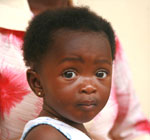March 2010
An article in the March 2010 issue of Clinical Infectious Diseases explores the hypothesis that lower frequency of mastitis among women who exclusively breastfeed (EBF) is the mechanism by which mother-to-child transmission of HIV (MTCT) is less common among EBF mothers than among those who practice mixed feeding. That is, the reduced suckling resulting from mixed feeding may lead to engorgement and mastitis, which in turn is associated with increased viral load and increased MTCT risk. Contrary to their hypothesis, the investigators found no association between mixed feeding and either mastitis (measured as elevated breast milk sodium-to-potassium ratio) or breast milk viral load. Even so, the authors confirmed earlier findings of an association between mastitis and breast milk HIV load, and also identified a positive interaction between mastitis and maternal plasma HIV load, by which the association between mastitis and breast milk HIV load strengthens with increasing plasma HIV load. Examining the MTCT impact of this interaction, they found that mastitis was associated with MTCT only when maternal HIV load was high, and even was protective when maternal HIV load was low—possibly due to increased levels of anti-infective factors resulting from mastitis. Thus, the increased MTCT risk of mixed feeding was not mediated by mastitis, and a new finding suggests further inquiry concerning the role of anti-infective factors.
The issue features a commentary on the article by Louise Kuhn, entitled: “Milk Mysteries: Why Are Women Who Exclusively Breast-feed Less Likely to Transmit HIV during Breast-Feeding?”
Date: Jul 27, 2010 | Category: Research highlights
